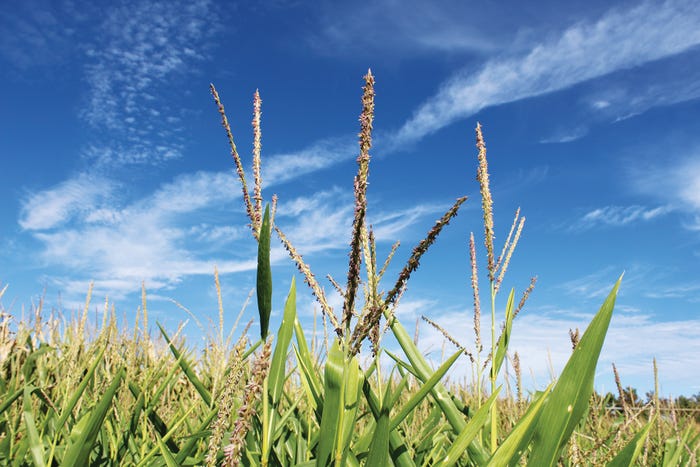
With corn continuing to garner acreage across the South, Extension personnel are often asked for advice about all aspects of production.
In advance of producers making seed choices for 2017, we have compiled information from several Extension researchers.
Seed And Soil
No matter the growing environment, everything begins with the hybrids you chose — and researchers agree, the best place to start is your state’s corn hybrid evaluation program.
“Trials impartially compare performance of a vast number of hybrids, representing numerous seed companies,” says Dr. Erick Larson, associate Extension and research professor at Mississippi State University. “Trials are replicated, producing more accurate yield results to help producers make better selection decisions.”
Experienced producers chose hybrids that have shown consistent performance on irrigated or dryland acreage. Hybrids should provide strong stalks, good root strength, and good resistance to diseases. Trait packages offer herbicide tolerance to aid weed control, protection against specific pests, and targeted seed treatments for controlling seedling pests.
“While not considered independent, company data is a good source for comparing yields among hybrids from the same company,” says Dan Fromme, associate professor and state corn specialist at the LSU AgCenter. He also advises planting two or more hybrids to spread risk.
In the South, corn is often rotated with cotton and soybeans to increase productivity, and reduce plant diseases and weed problems that accumulate in fields that are repetitively planted to the same crop. One seven-year LSU AgCenter study showed monocropping corn averaged $251 an acre, compared to a corn-cotton-wheat rotation that netted $313 an acre.
“Rotating with corn can, over time, also improve soil quality, particularly when reducing tillage,” Larson says.
Plant populations should be adjusted for irrigated versus dryland production, with a conservative seeding rate advised for dryland production to help insure a more stable yield if an extended drought occurs during June to early July, when the crop is more sensitive to drought.
Farmers have increased seeding rates since the commercialization of hybrids, but returns diminish with more plants per-acre, particularly for dryland. In the Delta, corn is mostly grown on 38-inch cotton-type row configurations, but research has shown that narrow row corn can be more productive — normally increasing yields by 8 percent to 10 percent.
“The more plants are spread out, the better they utilize light, water, and nutrients, which enhances productivity,” says Larson.
In Louisiana, Fromme advises higher plant populations on highly productive, deep alluvial soils, or on irrigated fields where moisture will not be a limiting factor.
Angela McClure, associate Extension professor for corn and soybeans at the University of Tennessee, says, “Earliness has become important as a way to offset potential yield reduction from heat and dry weather during critical development stages. Most Tennessee growers now plant early and medium relative maturity hybrids in late March to early April, since only 10 percent of our corn acres are irrigated.”
Planting early could lead to smaller plants as they progress through their vegetative state during cooler temperatures, limiting plant height. Evaluate short-term weather forecasts because corn planted early is more susceptible to stand failure from cool conditions or excessive moisture. Unfortunately, corn has very little compensation ability to make up for a weak start, which reduces yield.
“Growers should do everything possible from a plant performance standpoint, to achieve a strong start,” Larson says. “It’s much more practical than just going out and dropping 28,000 seeds per acre on dryland or 34,000 per acre on irrigated land.”
Fertility
Nitrogen is a big budget item for corn growth, and should be used effectively and efficiently. Wet spring weather causes leaching (more likely on sandy soils) and denitrification (when nitrogen in the soil is converted to gas and lost to the atmosphere), so fertility applications should be based on in-season needs.
“I like to see about one-third of a producer’s nitrogen applied at planting, and the rest as a lay-by treatment,” McClure says. “We have data that suggests a pre-tassel application of 30 pounds to 40 pounds can increase yields in wet years, and may be cost-effective when applied through a pivot.”
Aerial broadcast applications of urea have become increasingly used, but unless incorporated, it lays on the soil’s surface and could be lost through volatilization. In the Mid-South, pivots are more effective at incorporating urea, but furrow irrigation dominates across much of the Delta.
“Corn uses phosphorus and potassium early in its growth,” says Fromme, “and because they are immobile in the soil, they should be applied pre-plant or at planting.”
Testing soil fertility every three years used to be the norm, but with today’s crop rotation systems and high yields, levels of P and K are most likely being depleted at an accelerated rate.
“Crop needs vary,” says Larson, “and nutrient requirements are higher for corn than other crops, so more frequent soil testing is necessary to verify your crop will get what it needs to maximize yields.”

Corn tassels produce pollen to pollinate ears that leads to the production of kernels, but drought or heat stress can delay or even prevent pollination which can lead to poor kernel set.
No-Till: Go Or No Go?Farmers have been tilling their land for centuries. For many, it’s the way they farm. But variations of conservation tillage have made significant inroads since economic and environmental benefits have been verified through research and on-farm successes.
“A big benefit of conservation tillage is less deterioration of organic matter over time,” says Larson. “That’s especially true for corn. We can substantially improve soil quality by building soil organic matter content, which is inherently low across the Mid-South.”
From increased water-holding capacity, to less fuel uses and time on equipment, fewer trips across the field, erosion-prevention, and improved nutrient retention, the benefits are numerous.
The bottom line is to make good decisions based on your farming environment — and the first critical decision is your choice of hybrids.
About the Author(s)
You May Also Like




